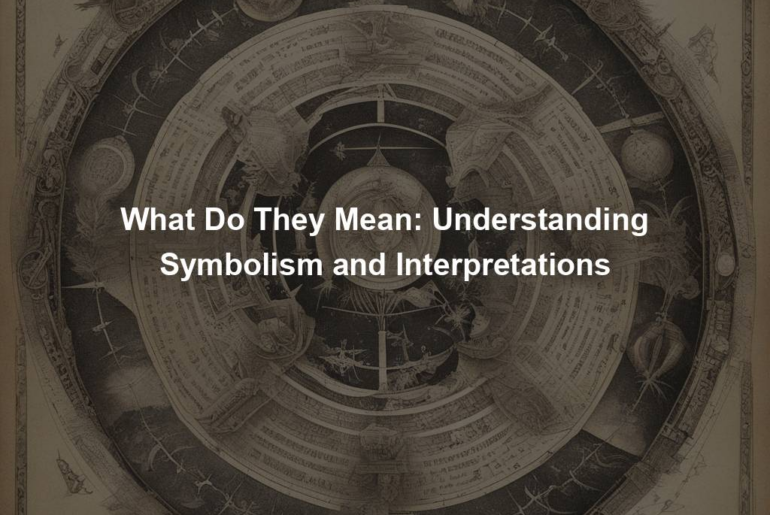Symbols have been used throughout history as a means of communication, evoking emotions, and conveying deeper meanings beyond their literal representation. From ancient cultures to modern-day societies, symbolism plays a significant role in art, literature, religion, and everyday life. Understanding symbolism and its interpretations allows individuals to delve into the rich layers of meaning embedded within various symbols.
The Power of Symbols
Symbols have the extraordinary power to transcend language barriers and convey complex ideas in a concise and impactful manner. They act as a universal language, tapping into our subconscious understanding and evoking emotions that cannot easily be put into words. Ancient civilizations recognized this power and adorned their artwork, architecture, and religious rituals with symbolic imagery.
Symbolism can serve as a powerful tool for storytelling. Authors and poets often weave symbols into their works to add depth and layers of meaning to their narratives. These symbols may be cultural, archetypal, or personal, allowing readers to connect with the story on a deeper, more emotional level. Analyzing symbols in literature helps uncover hidden themes and understand the intentions of the author.
Interpreting Symbols
Interpreting symbols requires careful observation, an understanding of cultural contexts, and an appreciation for personal experiences. While some symbols may have universally recognized meanings, others can vary across time and cultures. For example, a red rose commonly symbolizes love and passion, yet in different societies, it may signify political movements or religious symbols.
It is crucial to analyze symbols within their specific contexts. Historical, religious, and cultural backgrounds heavily influence the meaning of symbols. For instance, the symbol of a snake can represent different concepts in various cultures. In some regions, it symbolizes fertility and rebirth, while in others, it denotes danger or evil.
The Subjective Nature of Symbolism
One must also acknowledge the subjective nature of symbolism. While certain symbols may carry generally accepted meanings, individuals often derive personal interpretations based on their experiences, beliefs, and emotions. The same symbol can evoke different responses from different people, making symbolism beautifully open to diverse interpretations.
Symbolism invites individuals to engage actively with the art, literature, and visual cues they encounter daily. Rather than providing a definitive answer or a fixed meaning, it encourages reflection, exploration, and the understanding that symbols hold many layers of significance.
The Power of Finding Meanings
When we grasp the power of symbols and their interpretations, we gain a profound understanding of the world around us. Symbols not only enrich our aesthetic and intellectual experiences but also deepen our comprehension of different cultures and historical periods. They enable us to bridge the gap between diverse perspectives and connect with others on a profound level, fostering empathy and understanding.
In conclusion, symbols are powerful tools that add depth, emotion, and meaning to our lives. Understanding symbolism and interpretations allows us to explore the rich tapestry of human expression throughout time and across cultures. By appreciating the nuanced layers of meaning symbols possess, we can truly grasp the art of communication beyond words.

